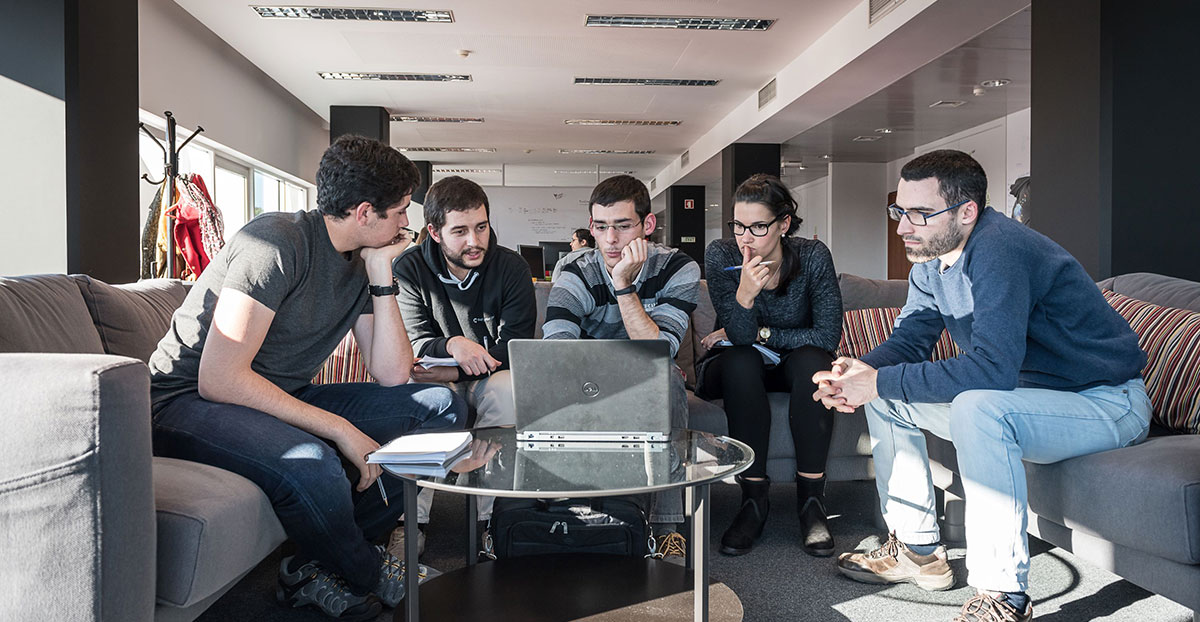 By Mr.Termsak Virakachornpong, Regional Vice President Southeast Asia, OutSystems
By Mr.Termsak Virakachornpong, Regional Vice President Southeast Asia, OutSystems
The ability to deliver engaging digital experiences is crucial for a company’s competitiveness, whether you’re talking about customer-facing experience to increase customer base or employee-facing experiences to attract new and retain existing talent.
But if before defining a digital experience strategy was simply a matter of choosing between mobile or web, today software users expect frictionless and seamless experiences that they can access through the channel, device, and touchpoint that is more convenient to them at that given moment. Today, organizations need to think beyond a multichannel and even an omnichannel strategy. They need to think multiexperience.
Defining Multiexperience
Multiexperience is about moving the focus from technology and channels to thinking about how people will use applications and interact with a company. It seeks to provide optimal experiences tailored to the individual customer or user, their context, touchpoints, and interaction modalities.
Think of Spotify. You’re listening to your favorite podcast on your phone, and you see the Spotify screen that you’re probably most familiar with. Then, you enter your car, and the podcast continues to play on your car’s speakers while the screen on your phone adjusts and simplifies the experience so that you don’t get distracted while driving. This consistent and frictionless journey is what we call a multiexperience.
A multiexperience development platform (MXDP), as defined by Gartner,
“(…) Offers development teams an opinionated and integrated set of front-end development tools and “backends for frontends” capabilities. It enables distributed and scalable development (both in teams and architecture) of fit-for-purpose apps across digital touchpoints and interaction modalities.”
To be considered an MXDP, a platform must cover at least four of five use cases:
- Mobile apps (mandatory)
- Progressive web apps
- Chatbot
- Voice
- Wearables and IoT
- Augmented and mixed reality
How does a modern application platform meet these capabilities, and why should you choose it for your multiexperience strategy?
Why Choose Modern App platform for Your MXDP Needs
OutSystems is a modern application development platform dedicated 100% to create a unified app development journey. To quote Gartner, “great organizations don’t build siloed applications”. With the Modern Application platform, organizations can build seamless, interconnected applications covering the most common digital transformation use cases, including employees’ and customers’ digital experiences.
Here’s why Modern Application Platform is the right platform for your multiexperiences needs.
- Serious Productivity
The modern application platform was designed to augment developers’ productivity by automating those repetitive and complex tasks, predicting next steps, suggesting solutions, and validating developer’s work patterns. This way, developers spend less time in lower value activities, and more thinking how they can own that experience and make that great app users will love.
To support developer productivity:
- Offers a large open-source marketplace: More than a place where developers can find reusable modules, connectors, and components, the OutSystems Forge is a marketplace for high value solutions. Developers can find fully working apps for different use cases, like an Employee Onboarding or a Field Service Management Web backend and Mobile app with voice integration. Organizations can start using these and more solutions immediately or evolve, with no limits, to fit their needs.
- Promotes reusability of experience components: Unlike traditional development, where you need multiple teams and platforms to create the same applications across different devices, with OutSystems, you can build experience components once and reuse them across different solutions. We call this an Experience System.
- Enables AI-tooling: With Modern Application platform, it is very easy to integrate your applications with AI services, such as chatbots, VR/AR, and machine learning models. At the same time, OutSystems provides AI-assisted development that predicts what developers need next and suggestions to accelerate development time.
- Augments your developers’ capabilities: In a time when it’s so hard to attract development talent, OutSystems frees your developers from the most tedious and complex development activities, so they can focus on that extra mile that makes the difference, allowing your business to do more with the same resources.
- Continuous Innovation
OutSystems is one of the pioneers in the MXDP space, and for 20 years, we’ve been evolving our platform to meet the business requirements of tomorrow. Our mission is to help organizations build whatever systems they need not only fast but also right and for the future. And by this I mean, creating solutions that can change and adapt as the market demands without compromising the functionality, scalability, and security of your systems.
To build those unique experiences for your customers and employees, developers can find thousands of reusable components and connectors in our Forge to easily integrate their apps to third-party solutions. This way, businesses are not stuck to our ecosystem and can easily integrate the best breed of chatbots, AI/VR, and voice that better suits their business needs.
With technology quickly evolving, if a new and disruptive chatbot appears in the market, for example, you can start using it tomorrow and get to market faster.
In addition to that, organizations can reuse components across their different business initiatives to increase consistency across the organization while promoting a sound architecture. That’s where the concept of Experience Systems that I mentioned above comes in.
An Experience System provides a set of living experience components that can be reused across different touchpoints in different interaction modalities. It may include a mesh of UI and visual elements, behavior, logic, data, and integrations (with third-party services, APIs, or existing core systems, for example). In short, they can encompass all the different layers that make up a digital experience.
With OutSystems, you can reuse these components across multiple applications, which allows you to standardize and scale experience best practices and enable you to take back control of your digital customer experience.
So, for example, imagine you want to deliver a service to your customers that can be consumed through web, mobile, and voice activated devices. Instead of having several specialized teams creating the same app and, basically, repeating work, your dev team can reuse those bottom layers and only tweak the last inch so that your app is personalized to the different touchpoints. This way, you can use a single platform and team to build the app once and make it available across any channel your customer wants.
This means you launch new digital products and services that meet your customers’ needs when and where they need you—and more importantly, before your competitors do.
- Users’ Trust
There’s one last piece you need to consider when evaluating the right MXDP for your business. When choosing the right platform, you should select one that has fully fledged capability and continues to innovate, but also one that gets the highest acceptance by the developers.
OutSystems is the most trusted vendor by enterprise software users. In Gartner Peer Insights for MXDP, OutSystems scores 4.5 stars out of 5, based on 587 reviews. To quote a user,”One codebase, many distribution methods – what a fantastic platform to ensure that development efforts and costs are kept low! The promise that OutSystems sells as a multiexperience development platform truly delivers what it says. It goes far beyond simply creating online forms, and presents rich, role-based workflows and access that works across all key platforms.”—Source: Gartner Peer Reviews.
In the most participated enterprise software end-users review site, G2 Crowd, enterprise users also ranked OutSystems as the leader, with over 400 reviews and an average rating of 4,5/5 stars.
Ready to Embrace Multiexperiences?
With customers and employees craving for frictionless and consistent experiences, delivering engaging digital journeys is no longer just an option. And if before, most digital experience needs could be solved with simple workflows and a sprinkle of automation, the need for multiexperiences has raised the bar for most MXDPs.
OutSystems is the only leader in this Magic Quadrant dedicated to creating and evolving a unified app dev platform that supports organizations in their different digital transformation initiatives. Whether you’re looking to transform your customer’s experience, retain and attract talent with workplace innovation, modernize your legacy applications, or automate your business processes, OutSystems got you covered.

โดย นายเติมศักดิ์ วีรขจรพงษ์ รองประธานภูมิภาคเอเชียตะวันออกเฉียงใต้ เอาท์ซิสเต็มส์
ความสามารถในการนำเสนอประสบการณ์ดิจิทัลที่น่าดึงดูดใจนับเป็นปัจจัยสำคัญที่จะช่วยเสริมสร้างขีดความสามารถด้านการแข่งขันของบริษัท ไม่ว่าจะเป็นประสบการณ์ที่นำเสนอให้แก่ลูกค้าโดยมีจุดมุ่งหมายเพื่อขยายฐานลูกค้า หรือประสบการณ์ของพนักงานซึ่งจะช่วยดึงดูดบุคลากรใหม่ ๆ และรักษาบุคลากรที่มีอยู่เดิมเอาไว้
ก่อนหน้านี้ การกำหนดกลยุทธ์ด้านประสบการณ์ดิจิทัลอาจเป็นเพียงแค่การเลือกระหว่างแพลตฟอร์มมือถือหรือเว็บไซต์ แต่ในปัจจุบัน ผู้ใช้ซอฟต์แวร์คาดหวังว่าจะได้รับประสบการณ์ที่ราบรื่นและไร้รอยต่อผ่านช่องทาง (Channel) อุปกรณ์ (Device) และจุดสัมผัส (Touchpoint) ที่สะดวกที่สุดสำหรับผู้ใช้งานในช่วงเวลานั้น ๆ ด้วยเหตุนี้ องค์กรจึงจำเป็นที่จะต้องคิดให้ไกลเกินกว่ากลยุทธ์ Multichannel หรือแม้กระทั่ง Omnichannel โดยหันมาใช้แนวทางการนำเสนอประสบการณ์ที่หลากหลาย หรือ Multiexperience
ทำความรู้จัก Multiexperience
Multiexperience เป็นการย้ายโฟกัสจากเดิมที่มุ่งเน้นเทคโนโลยีและช่องทาง ไปสู่การคิดวิเคราะห์เกี่ยวกับวิธีที่ผู้คนใช้งานแอปพลิเคชั่นและมีปฏิสัมพันธ์กับบริษัท โดยมุ่งจัดหาประสบการณ์ที่เหมาะสมที่สุด และปรับแต่งให้เข้ากับลูกค้าหรือผู้ใช้ รวมไปถึงบริบทการใช้งานอื่น ๆ จุดสัมผัส (Touch Point) และวิธีติดต่อสื่อสาร
ตัวอย่าง กรณีของ Spotify เมื่อคุณเปิดฟังพอดคาสต์ที่ชื่นชอบบนโทรศัพท์ ผ่านหน้าจอ Spotify ที่คุณคุ้นเคยที่สุดจากนั้นคุณเข้าไปในรถยนต์ และพอดคาสต์ดังกล่าวก็เล่นต่อเนื่องผ่านทางลำโพงภายในรถคุณ ขณะที่หน้าจอบนโทรศัพท์เองก็ปรับเปลี่ยนประสบการณ์ให้ดูเรียบง่ายมากขึ้น เพื่อไม่รบกวนขณะขับรถ ประสบการณ์ที่ดำเนินการอย่างไร้รอยต่อและสอดคล้องกันนี้ คือ สิ่งที่เราเรียกว่า Multiexperience
ตามคำจำกัดความของการ์ทเนอร์ (Gartner) ระบุว่าแพลตฟอร์มการพัฒนาแบบหลากหลายประสบการณ์ Multiexperience (Multiexperience Development Platform – MXDP) “(…) ช่วยให้ทีมงานฝ่ายพัฒนามีเครื่องมือสำหรับการพัฒนาส่วนหน้าบ้าน หรือฟรอนเอนด์ (Front-end) ที่ครบวงจร รวมไปถึงความสามารถด้าน “หลังบ้าน (แบ็คเอนด์) ที่รองรับส่วนของหน้าบ้าน-(ฟรอนท์เอนด์)” ซึ่งแพลตฟอร์มดังกล่าวจะรองรับการพัฒนาแอปในลักษณะกระจาย (Distributed) และปรับขนาดให้ยืดหยุ่น (ทั้งในส่วนของทีมงานและสถาปัตยกรรม) เพื่อให้สามารถสร้างแอปพลิเคชั่นที่ต้องการให้เหมาะสมกับจุดประสงค์ที่ตั้งไว้โดยครอบคลุมจุดสัมผัสของช่องทางดิจิทัล (Digital Touchpoints) และรูปแบบการติดต่อสื่อสารที่หลากหลาย”
ในการพิจารณา แพลตฟอร์มการพัฒนาแบบหลากหลายประสบการณ์ (MXDP) จะต้องครอบคลุมรูปแบบการใช้งานอย่างน้อย 4 ใน 5 อย่างดังต่อไปนี้:
- Mobile Apps (จำเป็น)
- Progressive Web Apps
- แชทบอท (Chatbot)
- ระบบสั่งงานด้วยเสียง
- อุปกรณ์สวมใส่ (Wearables) และ IoT
- Augmented Reality และ Mixed Reality
โมเดิร์นแอปพลิเคชั่นแพลตฟอร์มจะมาสามารถรองรับความสามารถเหล่านี้ได้อย่างไร? และเพราะเหตุใดธุรกิจจึงควรเลือกใช้โมเดิร์นแอปพลิเคชั่นแพลตฟอร์มเพื่อสนับสนุนกลยุทธ์ Multiexperience?
เพราะเหตุใดจึงควรเลือกใช้โมเดิร์นแอปพลิเคชั่นแพลตฟอร์มเพื่อตอบโจทย์ความต้องการด้าน MXDP ของธุรกิจ
เอาท์ซิสเต็มส์เป็นแพลตฟอร์มการพัฒนาแบบโมเดิร์นแอปพลิเคชั่นที่ออกแบบเป็นพิเศษเพื่อรองรับการพัฒนาแอปพลิเคชั่นแบบครบวงจร 100% อ้างอิงจากการ์ทเนอร์ที่ระบุว่า “องค์กรที่ดีจะไม่สร้างแอปพลิเคชั่นที่แยกเป็นส่วน ๆ ปราศจากการเชื่อมต่อกัน” โมเดิร์นแอปพลิเคชั่นแพลตฟอร์มช่วยให้องค์กรสามารถสร้างแอปพลิเคชั่นที่เชื่อมต่อเข้าด้วยกันอย่างกลมกลืน ครอบคลุมกรณีการใช้งานทั่วไปสำหรับการทำดิจิทัลทรานส์ฟอร์เมชั่น รวมไปถึงการประสบการณ์ดิจิทัลสำหรับพนักงานและลูกค้า
เหตุผลที่ทำให้โมเดิร์นแอปพลิเคชั่นแพลตฟอร์มเป็นแพลตฟอร์มที่เหมาะสมตอบโจทย์ความต้องการด้าน Multiexperience ของธุรกิจ มีดังนี้
- ประสิทธิภาพที่เหนือกว่า
แพลตฟอร์มการพัฒนาแบบโมเดิร์นแอปพลิเคชั่นได้รับการออกแบบเพื่อยกระดับประสิทธิภาพการทำงานของนักพัฒนา ด้วยการปรับเปลี่ยนงานซับซ้อนที่ทำอย่างซ้ำ ๆ ให้เป็นรูปแบบอัตโนมัติ พร้อมทั้งคาดการณ์การดำเนินการในขั้นตอนต่อไป แนะนำวิธีแก้ปัญหา และตรวจสอบรูปแบบการทำงานของนักพัฒนา ซึ่งทั้งหมดนี้จะช่วยให้นักพัฒนาใช้เวลาน้อยลงในการทำกิจกรรมที่มีมูลค่าต่ำ และมีเวลามากขึ้นในการคิดใคร่ครวญเกี่ยวกับการนำเสนอประสบการณ์ที่เหมาะสมและพัฒนาแอปพลิเคชั่นที่มีประสิทธิภาพ ซึ่งจะสร้างความพึงพอใจให้แก่ผู้ใช้งาน
เพื่อเพิ่มประสิทธิภาพการทำงานของนักพัฒนา:
- นำเสนอตลาดโอเพ่นซอร์สขนาดใหญ่: นอกจากจะเป็นแหล่งที่นักพัฒนาสามารถค้นหาโมดูล (Reusable Modules) คอนเน็กเตอร์ (Connectors) และคอมโพเนนต์ (Components) ที่สามารถหมุนเวียนกลับมาใช้ได้เรื่อย ๆ แล้ว OutSystems Forge ยังเป็นตลาดกลางสำหรับโซลูชั่นที่มีมูลค่าสูงอีกด้วย โดยนักพัฒนาจะสามารถค้นหาแอปมากมายพร้อมใช้งานโดยรองรับประเภทการใช้งาน (Use cases) ที่หลากหลาย เช่น การดูแลพนักงานใหม่ (Employee Onboarding) หรือ Field Service Management Web backend and Mobile รองรับการสั่งงานด้วยเสียง โดยองค์กรต่าง ๆ จะสามารถเริ่มต้นใช้งานโซลูชั่นเหล่านี้ได้ในทันที หรือพัฒนาต่อยอดให้สอดรับกับความต้องการที่หลากหลายของแต่ละธุรกิจได้อย่างไร้ขีดจำกัด
- ส่งเสริมการนำเอา Experience Components กลับมาใช้: ในการพัฒนารูปแบบเดิม คุณจะต้องใช้ทีมงานและแพลตฟอร์มต่างๆ เพื่อสร้างแอปพลิเคชั่นเดียวกันสำหรับอุปกรณ์ที่แตกต่างกัน แต่ด้วยแพลตฟอร์มเอาท์ซิสเต็มส์ คุณจะสามารถสร้าง Experience components เพียงครั้งเดียว แล้วนำไปใช้กับโซลูชั่นต่าง ๆ ต่อไปได้เรื่อย ๆ เราเรียกสิ่งนี้ว่า Experience System
- รองรับเครื่องมือ AI: โมเดิร์นแอปพลิเคชั่นแพลตฟอร์มช่วยเพิ่มความสะดวกในการบูรณาการแอปพลิเคชั่นของคุณเข้ากับบริการ AI เช่น แชทบอท, VR/AR และโมเดล Machine Learning และขณะเดียวกัน ยังรองรับการพัฒนาโดยอาศัยความช่วยเหลือจาก AI AI-assisted development ซึ่งจะคาดการณ์ว่านักพัฒนาต้องการทำอะไรในขั้นตอนต่อไป และให้คำแนะนำเพื่อเพิ่มความรวดเร็วในการพัฒนา
- ยกระดับขีดความสามารถของนักพัฒนา: ปัจจุบันเป็นเรื่องยากที่จะสรรหาบุคลากรใหม่ ๆ ที่มีความเชี่ยวชาญด้านการพัฒนา ด้วยเหตุนี้ โมเดิร์นแอปพลิเคชั่นแพลตฟอร์มจึงแบ่งเบาภาระให้กับนักพัฒนาที่คุณมีอยู่ โดยเฉพาะอย่างยิ่งในส่วนของกิจกรรมการพัฒนาที่ซับซ้อนและยุ่งยากมากที่สุด ทำให้นักพัฒนาสามารถทุ่มเทเวลาและความพยายามให้กับงานสำคัญ ๆ ที่ช่วยให้องค์กรธุรกิจของคุณสามารถทำสิ่งต่าง ๆ ได้มากขึ้นโดยใช้ทรัพยากรที่มีอยู่
- มีการสร้างสรรค์นวัตกรรมอย่างต่อเนื่อง
เอาท์ซิสเต็มส์เป็นหนึ่งในผู้บุกเบิกด้าน MXDP และตลอดระยะเวลา 20 ปีที่ผ่านมา ได้พัฒนาแพลตฟอร์มเพื่อตอบสนองความต้องการด้านธุรกิจในอนาคต พันธกิจของเรา คือ การช่วยให้องค์กรต่าง ๆ สร้างระบบใด ๆ ก็ตามที่ต้องการได้ ไม่ใช่แค่ภายในเวลาที่รวดเร็ว ทั้งยังมีความถูกต้องเหมาะสมและพร้อมรองรับความเปลี่ยนแปลงในอนาคตได้อีกด้วย ซึ่งนั่นหมายถึงการสร้างโซลูชั่นที่สามารถปรับเปลี่ยนตามความต้องการของตลาด โดยไม่บั่นทอนฟังก์ชั่นการทำงาน เพิ่มความยืดหยุ่นในการปรับขยายขนาด และยังคงไว้ซึ่งความปลอดภัยของระบบ
ในการสร้างสรรค์ประสบการณ์ที่แตกต่างให้แก่ลูกค้าและพนักงาน นักพัฒนาจะสามารถค้นหาคอมโพเนนต์ Components และคอนเน็กเตอร์ Connectors ที่สามารถหมุนเวียนนำกลับมาใช้ได้จำนวนหลายพันรายการใน Outsystems Forge เพื่อบูรณาแอปพลิเคชั่นของตนเองเข้ากับโซลูชั่นของบริษัทอื่นได้อย่างง่ายดาย วิธีนี้ช่วยให้องค์กรไม่ต้องผูกติดอยู่กับระบบนิเวศเดิม และสามารถผนวกรวมแชทบอท, AI/VR และระบบสั่งงานด้วยเสียงที่ดีที่สุดและเหมาะกับความต้องการทางธุรกิจขององค์กร
ตัวอย่างเช่น ในอนาคต เมื่อเทคโนโลยีมีการพัฒนาเปลี่ยนแปลง และมีแชทบอทรุ่นใหม่ที่ก้าวล้ำในตลาด คุณก็สามารถเริ่มต้นใช้งานแชทบอทดังกล่าวได้ทันที และสามารถนำเสนอผลิตภัณฑ์และบริการใหม่ออกสู่ตลาดได้รวดเร็วยิ่งขึ้น
นอกจากนั้น องค์กรยังสามารถนำเอาคอมโพเนนต์ Components ต่าง ๆ มาหมุนเวียนใช้งานได้เรื่อย ๆสำหรับโครงการริเริ่มทางธุรกิจที่แตกต่างกัน เพื่อเพิ่มความสอดคล้องในลักษณะที่ครอบคลุมทั่วทั้งองค์กร ควบคู่ไปกับการพัฒนาสถาปัตยกรรมที่เหมาะสม ในจุดนี้เองที่แนวคิด Experience System เข้ามามีบทบาท
Experience System จัดหาชุดของ Experience Components ให้สามารถนำกลับมาใช้ได้เรื่อย ๆ ในช่องทางติดต่อที่แตกต่างกันและครอบคลุมวิธีการติดต่อสื่อสารที่หลากหลาย เช่น UI และองค์ประกอบด้านภาพ ลักษณะการทำงาน ตรรกะการคิด ข้อมูล และส่วนบูรณาการ (เข้ากับบริการของบริษัทอื่น, API หรือระบบหลักที่มีอยู่ เป็นต้น) สรุปก็คือ จะรวมเลเยอร์ต่าง ๆ ทั้งหมดที่ประกอบขึ้นเป็นประสบการณ์ดิจิทัลนั่นเอง
ด้วยแพลตฟอร์มของเอาท์ซิสเต็มส์ คุณจะสามารถนำเอาคอมโพเนนต์ Components เหล่านี้กลับมาใช้โดยครอบคลุมแอปพลิเคชั่นที่หลากหลาย ซึ่งจะช่วยให้คุณกำหนดมาตรฐานและปรับขนาดแนวทางด้านประสบการณ์ได้อย่างเหมาะสม และคุณจะสามารถควบคุมประสบการณ์ดิจิทัลสำหรับลูกค้าได้อย่างแท้จริง
ตัวอย่างเช่น คุณต้องการนำเสนอบริการที่ลูกค้าจะสามารถใช้งานผ่านเว็บ มือถือ และอุปกรณ์ที่สั่งงานด้วยเสียง แทนที่คุณจะมอบหมายให้ทีมงานที่มีความเชี่ยวชาญเฉพาะด้านหลาย ๆ ทีมสร้างแอปพลิเคชั่นเดียวกัน ซึ่งโดยพื้นฐานถือเป็นงานที่ซ้ำซ้อน ทีมงานฝ่ายพัฒนาของคุณก็สามารถนำเอาเลเยอร์พื้นฐานกลับมาใช้ และเพียงแค่ปรับแต่งเพิ่มเติมอีกเล็กน้อย เพื่อให้แอปของคุณมีลักษณะสอดคล้องกับช่องทางการติดต่อที่แตกต่างกัน วิธีนี้จะช่วยให้คุณสามารถใช้แพลตฟอร์มและทีมงานเดียวในการสร้างแอปพลิเคชั่นเพียงหนึ่งครั้ง และนำเสนอแอปพลิเคชั่นนั้นผ่านช่องทางที่หลากหลายตามที่ลูกค้าต้องการ
นั่นหมายความว่าคุณจะสามารถเปิดตัวผลิตภัณฑ์ดิจิทัลและบริการใหม่ ๆ ที่ตอบโจทย์ความต้องการของลูกค้าได้อย่างทันทีผ่านช่องทางที่เหมาะสมและยังสอดรับกับสถานการณ์และความจำเป็นที่เกิดขึ้น ที่สำคัญคือ การทำได้เร็วกว่าคู่แข่ง
- ความเชื่อมั่นของผู้ใช้งาน
มีอีกหนึ่งประเด็นที่คุณจะต้องพิจารณาในการเลือกใช้แพลตฟอร์ม MXDP ที่เหมาะกับธุรกิจของคุณ คุณควรเลือกใช้แพลตฟอร์มที่มีความสามารถพร้อมสรรพ และมีการสร้างสรรค์นวัตกรรมอย่างต่อเนื่อง ทั้งยังได้รับการยอมรับจากนักพัฒนามากที่สุด
เอาท์ซิสเต็มส์เป็นหนึ่งในบริษัทที่ได้รับความไว้วางใจมากที่สุดจากผู้ใช้ซอฟต์แวร์ระดับองค์กร (Enterprise Software users) ในรายงาน Gartner Peer Insights for MXDP เอาท์ซิสเต็มส์ได้รับคะแนน 4.5 ดาว จากคะแนนเต็ม 5 ดาว โดยอ้างอิงจากรีวิว 587 รายการ ทั้งนี้ ผู้ใช้รายหนึ่งระบุว่า “โค้ดเบสชุดเดียวสามารถรองรับการทำไปใช้ได้หลากหลายรูปแบบ นับเป็นแพลตฟอร์มที่น่าทึ่ง ช่วยลดค่าใช้จ่ายและทรัพยากรสำหรับการพัฒนา เอาท์ซิสเต็มส์ทำได้จริงตามที่พูดไว้เกี่ยวกับการนำเสนอแพลตฟอร์มสำหรับการพัฒนา Multiexperience ซึ่งเป็นอะไรที่มากกว่าเพียงแค่การสร้างแบบฟอร์มออนไลน์ โดยมีการนำเสนอเวิร์กโฟลว์อย่างละเอียดตามบทบาทของผู้ใช้งาน รวมถึงสิทธิ์การเข้าถึง ซึ่งครอบคลุมแพลตฟอร์มสำคัญๆ ทั้งหมด”—ที่มา: Gartner Peer Reviews
ในเว็บไซต์รีวิวความเห็นของผู้ใช้ซอฟต์แวร์ระดับองค์กรที่มีผู้เข้าร่วมมากที่สุดอย่าง G2 Crowd ยังพบว่าผู้ใช้งานระดับองค์กรจัดอันดับให้เอาท์ซิสเต็มส์เป็นผู้นำเช่นกัน ด้วยจำนวนรีวิวกว่า 400 รายการ และคะแนนเฉลี่ย 4.5/5 ดาว
พร้อมหรือยังสำหรับการปรับใช้แนวทาง Multiexperience?
ขณะที่ลูกค้าและพนักงานต้องการประสบการณ์ที่ราบรื่นและสอดคล้องกัน การนำเสนอประสบการณ์ดิจิทัลที่น่าดึงดูดใจจึงเป็นสิ่งที่ไม่อาจหลีกเลี่ยงได้อีกต่อไป และเมื่อก่อนนี้เราอาจสามารถตอบสนองความต้องการด้านประสบการณ์ดิจิทัลส่วนใหญ่ได้ด้วยขั้นตอนเวิร์กโฟลว์ที่เรียบง่ายและระบบงานอัตโนมัติอีกนิดหน่อย แต่ปัจจุบันความต้องการสำหรับประสบการณ์ที่หลากหลายในรูปแบบ Multiexperience ได้ยกระดับมาตรฐานสำหรับแพลตฟอร์ม MXDP ส่วนใหญ่
เอาท์ซิสเต็มส์เป็นผู้นำเพียงหนึ่งเดียวในรายงาน Magic Quadrant ที่มีความมุ่งมั่นในการสร้างและพัฒนาปรับปรุงแพลตฟอร์มสำหรับการพัฒนาแอปพลิเคชั่นแบบครบวงจร ซึ่งจะช่วยให้องค์กรต่าง ๆ สามารถดำเนินโครงการดิจิทัลทรานส์ฟอร์เมชั่นในหลากหลายด้านได้อย่างมีประสิทธิภาพ ไม่ว่าคุณจะต้องการพลิกโฉมการสร้างประสบการณ์สำหรับลูกค้า รักษาและดึงดูดบุคลากรด้วยนวัตกรรมสำหรับสถานที่ทำงาน ปรับปรุงแอปพลิเคชั่นที่ล้าหลังให้ทันสมัย หรือปรับเปลี่ยนกระบวนการธุรกิจให้เป็นแบบอัตโนมัติ เอาท์ซิสเต็มส์สามารถตอบทุกโจทย์ความต้องการของธุรกิจได้อย่างครบถ้วน
ข้อมูลอ้างอิงเพิ่มเติม:
สิ่งที่ Gartner Magic Quadrant ระบุเกี่ยวกับเอาท์ซิสเต็มส์เอาต์ซิสเต็มส์
การ์ทเนอร์ระบุว่า เอาท์ซิสเต็มส์เอาต์ซิสเต็มส์ (OutSystems) เป็น “ผู้บุกเบิกแพลตฟอร์ม MXDP รายแรก ๆ” และ “มีการเติบโตที่แข็งแกร่งอย่างต่อเนื่อง” นอกเหนือจากการที่เอาต์ซิสเต็มส์นำเสนอเทคโนโลยีที่รองรับการพัฒนาแอปแอปพลิเคชั่นสำหรับเว็บ, โมบายล์, Progressive Web และอุปกรณ์สวมใส่แล้ว การ์ทเนอร์ยังได้เน้นย้ำถึงความสามารถที่สำคัญ 3 ข้อที่ทำให้เอาท์ซิสเต็มส์เป็นผู้นำในด้านแพลตฟอร์ม MXDP: ได้แก่
- “การบูรณาการที่ง่ายดายของแอปแอพพลิเคชั่นที่รองรับการสนทนาและแอปแอพพลิเคชั่น AR/VR”
- “การปรับปรุงประสิทธิภาพการทำงานให้กับทีมงานฝ่ายพัฒนาซึ่งมุ่งเน้นการสร้างคอมโพเนนต์ที่สามารถนำกลับมาใช้”
- “การคาดการณ์เกี่ยวกับความเปลี่ยนแปลงของตลาด ด้วยการแสดงให้เห็นอย่างต่อเนื่องถึงความสามารถในการผนวกรวมฟีเจอร์ใหม่ ๆ (เช่น เครื่องมือที่รองรับ AI) เมื่อมีความต้องการเกิดขึ้นในตลาด”
 By Mr.Termsak Virakachornpong, Regional Vice President Southeast Asia, OutSystems
By Mr.Termsak Virakachornpong, Regional Vice President Southeast Asia, OutSystems 